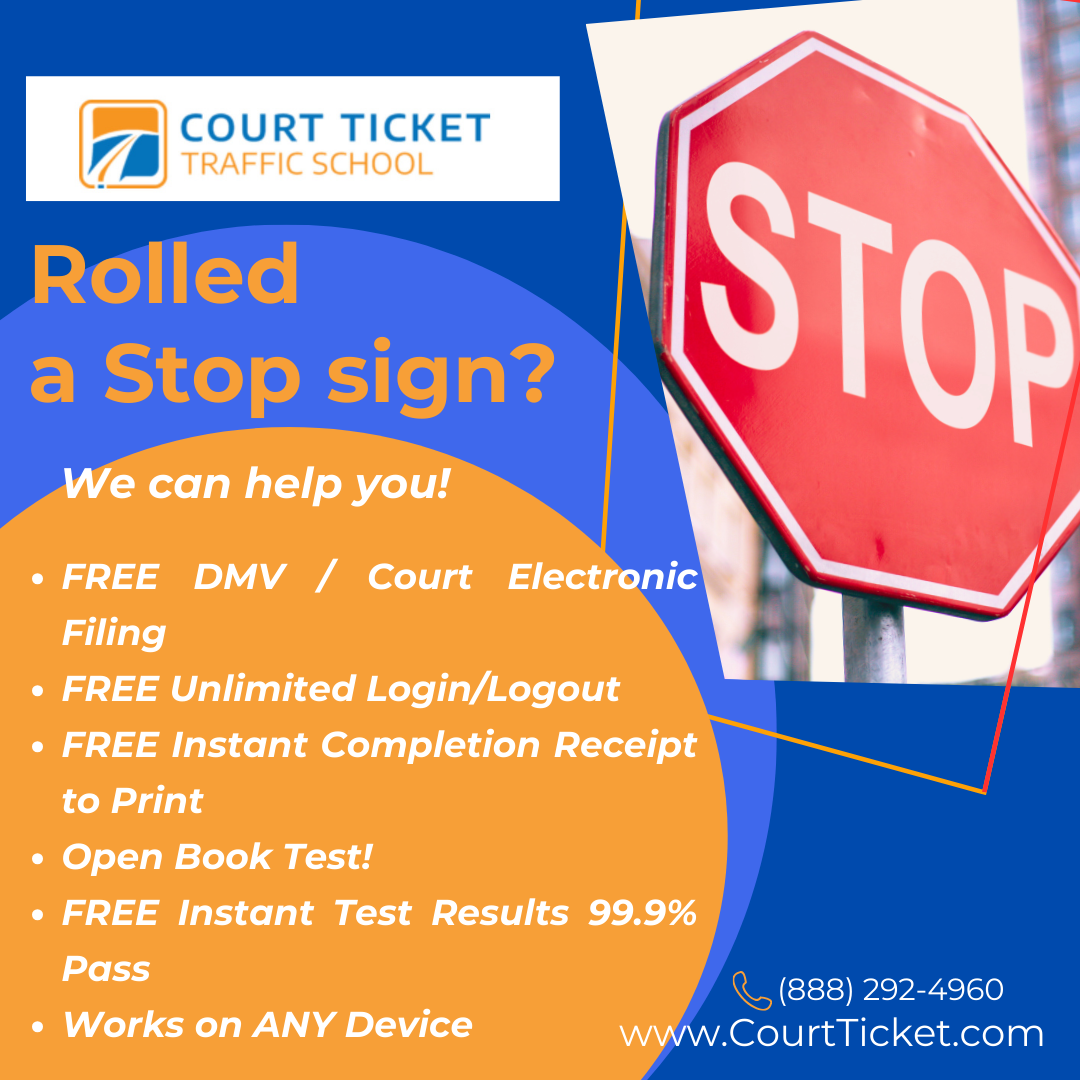I got a Rolling Stop ticket what should I do?

One of the most common traffic offenses in Southern California is the “California Roll”, “California Stop” or “Rolling Right Turn Red Light Camera“. Other places call this a rolling stop. A “California Roll” or rolling stop involves an individual failing to come to a complete stop, that is, all four wheels have ceased moving at a stop sign or red light that permits a right turn. This includes a “Rolling Right Turn” on a Red Light Camera that can cost $489 (approximately 2022) and can cost you in increasing your insurance rates and result in points on your license.
Insurance Rates on a California Roll Violation:
An unanticipated consequence of obtaining a California Roll traffic citation is that your insurance rates could increase substantially. According to a study done by Insurance.com, which analyzed approximately 500,000 insurance figures, failing to stop or rolling stop violations are among the fifteen most common moving violations in the country.
Moreover, according to Forbes, a violator’s car insurance rates could increase as much as 19 percent for a simple rolling stop violation.
How to Fight a California Roll Ticket
One option for battling a California Roll violation is to attend traffic school. Attending traffic school is cheap and easy. Generally, the individual must take a simple course online to keep a violation off of his or her record.
How many points is a rolling stop in California?
A rolling stop ticket puts one point on your driving record, but completing traffic school may remove the point from your license. If you have multiple offenses on your record, the court may order you to attend this program, usually held on evenings or weekends.
California Residents are Active Pedestrians
California residents have often prided themselves on leading a healthier lifestyle than other areas of the country because of their love for walking, skating, and riding bicycles. Paths and walkways are found throughout the state encouraging people to walk, ride or skate. Bicycle lanes and pedestrian paths are continually being made throughout the state to keep up with the demand by the people for these items.
There are five key things to know about traffic tickets under this section:
- The fine for a violation is $238, plus court costs and assessments.
- A person cited for failing to stop under CVC 22450 can (a) pay the fine, (b) do traffic school (once every 18 months) or (c) fight the ticket in court.
- If you complete traffic school or fight the ticket successfully, you will avoid getting points on your DMV record.
- Otherwise, this is a “one point” violation. You risk getting a negligent operator license suspension if you get 4 points in 12 months, 6 points in 24 months or 8 points in 36 months.
- Ignoring the ticket (neither paying the fine nor going to court) will likely result in being charged with failure to appear per Vehicle Code 40508. Although failing to stop at a stop sign is just an infraction, failure to appear can be charged as a misdemeanor crime. It can also result in a hold on your driver’s license per Vehicle Code 40509.5.
How Is a Rolling Stop Determined?
As with many other traffic tickets, a rolling stop is an often subjective opinion of the law enforcement officer (LEO), except in a camera-enforced red-light stop, and then other technicalities could prove your innocence or provide enough doubt so that the traffic court judge will rule in your favor.
Several sections of the CA Vehicle Code (CVC) cover what is a legal stop both at a stop sign and a traffic light-controlled intersection. There is an actual Physics paper, The Proof of Innocence, written on this subject by a University of California San Diego (UCSD) student. Though you should have a good understanding of Physics if you are going to use this argument before a judge.
The supposition uses the linear measurement of speed versus the angular measurement, which most observers of the stop would have if viewed from anywhere but directly behind or in front of the vehicle. Directly behind is the best vantage point because there is no angle.
In this position, the observer has the benefit of viewing the brake lights of the vehicle ahead. Any other location leaves the viewer with at least some doubt as to how long the stop was and where it occurred.
Rolling Stop Ticket FAQ
What is the price of traffic school?
$24.95 and 2-4 hours of your time.
What if I want to cancel?
You can call for a refund please note without traffic school your insurance rate will go up for having a moving violation and you will loose your good driver discount.
Can I Fight My Ticket?
Fighting a stop sign ticket can be an uphill battle when it just comes down to your word against that of the officer. Simply put, in most cases, the judge is going to believe the officer.
What Are the Consequences of Committing a California Roll?
The consequences of performing a rolling stop can be quite impactful. A ticket for a California Roll violation may result in a $238 fine and up to one point on your California driver’s license, which would then automatically be reported to your insurance company.
Photo of a California Roll?

Looks good!
One of the most common tickets?
Not fully stopping can pose a danger to other drivers as well as to pedestrians. That’s why police are cracking down on those of us California Rollers. After all, if there are no other cars in an intersection, there is no one to completely stop for, right? So, it’s safe. You actually yielded. But your car didn’t “settle” behind the crosswalk line before you left the stop sign or turned right at a red light. So, more police officers are stopping cars that roll through stop signs and red lights without completely stopping. These tickets are costly and can jack up your insurance rates by adding points to your driving record.

